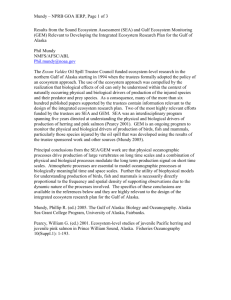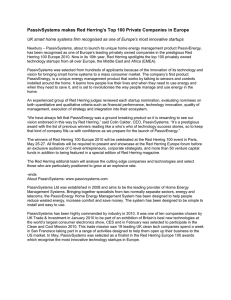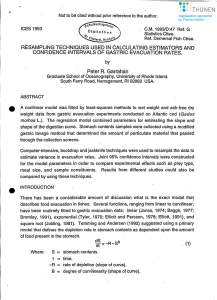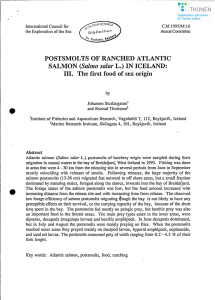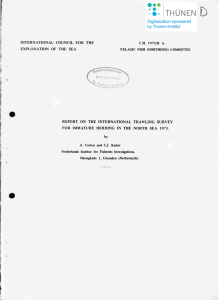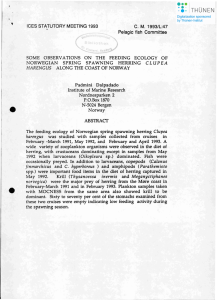The biological basis of WCVI herring and salmon production variability
advertisement
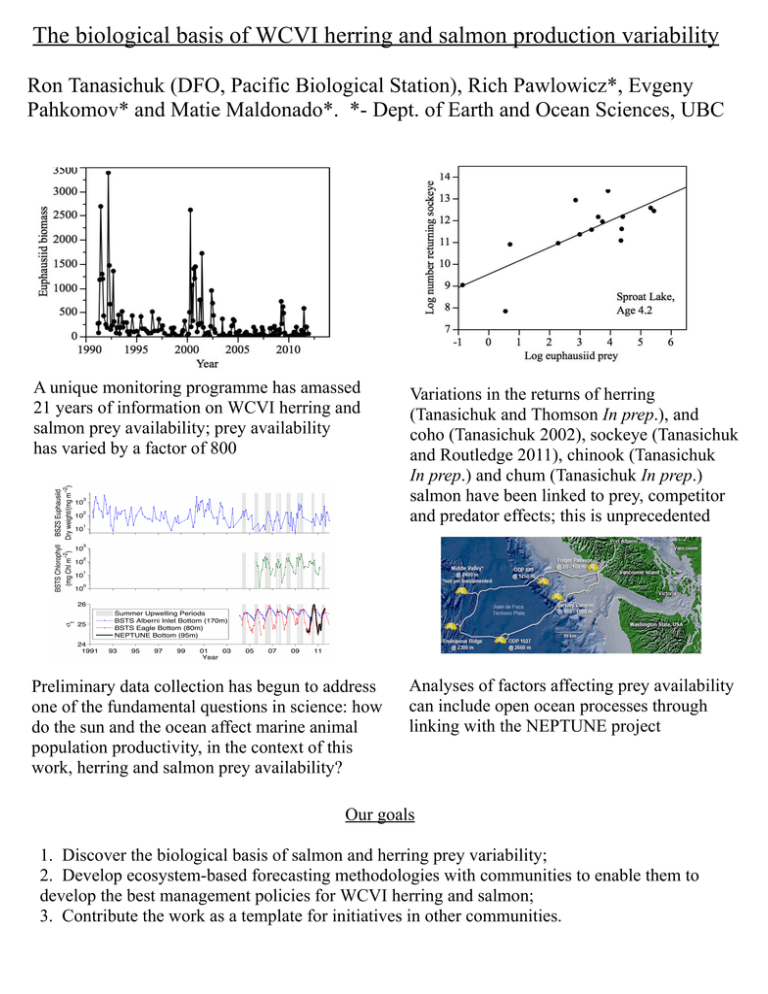
The biological basis of WCVI herring and salmon production variability Ron Tanasichuk (DFO, Pacific Biological Station), Rich Pawlowicz*, Evgeny Pahkomov* and Matie Maldonado*. *- Dept. of Earth and Ocean Sciences, UBC A unique monitoring programme has amassed 21 years of information on WCVI herring and salmon prey availability; prey availability has varied by a factor of 800 Variations in the returns of herring (Tanasichuk and Thomson In prep.), and coho (Tanasichuk 2002), sockeye (Tanasichuk and Routledge 2011), chinook (Tanasichuk In prep.) and chum (Tanasichuk In prep.) salmon have been linked to prey, competitor and predator effects; this is unprecedented Preliminary data collection has begun to address one of the fundamental questions in science: how do the sun and the ocean affect marine animal population productivity, in the context of this work, herring and salmon prey availability? Analyses of factors affecting prey availability can include open ocean processes through linking with the NEPTUNE project Our goals 1. Discover the biological basis of salmon and herring prey variability; 2. Develop ecosystem-based forecasting methodologies with communities to enable them to develop the best management policies for WCVI herring and salmon; 3. Contribute the work as a template for initiatives in other communities.




